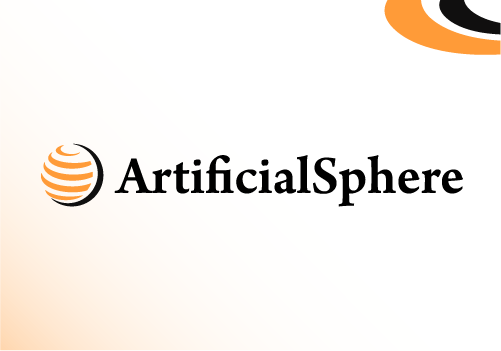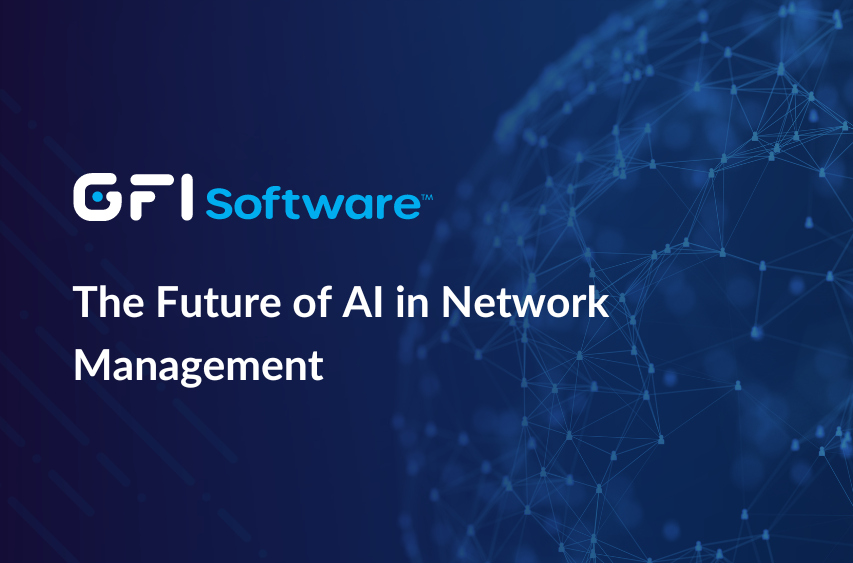EY and Nvidia are teaming up to transform supply chain management with an AI-powered platform designed to unify data, boost visibility, and help firms cut costs, reduce risk, and scale smarter. The new solution, EY.ai for supply chain, blends real-time data integration, predictive intelligence, and automation within a cohesive AI-enabled environment. Built in collaboration with Nvidia, the platform aims to turn fragmented, siloed information into actionable insights, enabling better decision-making, scenario planning, and proactive responses across the supply network. By leveraging Nvidia’s accelerator technology and EY’s industry expertise, the joint solution seeks to shift organizations from reactive crisis management to strategic, proactive supply chain management. The collaboration underscores a broader industry shift toward AI-enabled visibility and resilience, with the promise of measurable improvements in capacity, delivery performance, and speed to value.
The Challenge of Fragmented Data in Modern Supply Chains
In today’s highly interconnected global economy, supply chains are increasingly complex, spanning multiple geographies, suppliers, manufacturers, and distributors. Yet many organizations struggle to achieve a unified view of these networks. Fragmented, real-time visibility remains elusive, and as a consequence, several business outcomes suffer across the board.
First, when visibility is incomplete, sales opportunities slip away. Customers expect reliable delivery and consistent product availability, but without a single source of truth across the end-to-end chain, companies may miss signals about demand shifts, supplier constraints, or transportation disruptions. Those gaps translate into lost sales and diminished customer trust, undermining competitive positioning in fast-moving markets.
Second, operational costs rise as teams contend with inconsistent data and disconnected systems. Reconciling information from disparate sources tends to require manual work, duplicative effort, and delayed response times. The result is higher labor costs, increased risk of errors, and slower containment of supply chain issues. Scattered data also makes it harder to balance cost and service level objectives—factors that are critical as market conditions evolve and customers demand greater agility.
Third, the lack of a unified perspective fuels information overload. When data streams from various sources pile up without coherent governance, teams face information deluge rather than insight. This fragmentation impedes swift, evidence-based decision-making and can prevent rapid reallocation of resources in the face of changing circumstances. The consequence is a drag on innovation, with slower time-to-value for new supply chain strategies and technologies.
Fourth, the consequences ripple through the organization, leading to inefficiencies and risk. Disconnections between planning, procurement, manufacturing, logistics, and distribution create gaps in risk modeling and response options. As a result, companies may struggle to identify threats, model viable alternatives, or respond precisely when disruptions occur. In practice, innovation slows, delays accumulate, and missed opportunities become routine rather than exceptional events.
Fifth, many businesses operate under the assumption that their current systems provide sufficient control. Yet real-world disruptions expose the limitations of conventional tools. The need for deeper visibility goes beyond tracking shipments; it encompasses understanding the root causes of bottlenecks, evaluating multiple potential responses, and enforcing decision-support capabilities that align with business goals. A higher level of data integration and intelligent automation becomes not just desirable but essential for cost efficiency and lasting resilience.
This landscape creates a compelling case for AI-enabled, end-to-end supply chain visibility. The industry is increasingly recognizing that traditional pilots and proofs of concept, when deployed in isolation, fail to deliver sustained value. The financial implications are substantial, with industry observers noting that billions of dollars have been squandered in recent years due to incomplete data integration and a lack of real-time, scalable insights. Consequently, there is a clear and urgent demand for tools that unify data across the network, while empowering organizations with real-time control over operations and scalable insights that can drive meaningful improvements.
Within this context, the EY.ai for supply chain platform represents a strategic response to the demand for unified data, real-time visibility, and automated decision-making. The platform is designed to harmonize data streams, streamline analytics, and automate decision pathways in a way that reduces manual effort and accelerates response times. The overarching aim is to provide a robust, AI-powered foundation that helps organizations identify bottlenecks, simulate scenarios, analyze risks, and automate decisions with confidence. The result, according to proponents, is a more resilient and efficient supply chain capable of adapting to evolving customer demands and shifting supply-side conditions.
In short, the core problem is clear: fragmented data, siloed functions, and information overload hinder timely, informed action. Addressing this challenge requires an integrated approach that combines data unification, advanced analytics, and automation—capabilities that are increasingly possible with AI-powered platforms and strategic partnerships between leading technology providers and industry experts.
EY.ai for Supply Chain: Vision, Architecture, and Collaboration
EY.ai for supply chain represents a concerted effort to bring together the best of EY’s industry knowledge with Nvidia’s advanced AI and GPU technologies. The platform is designed to deliver a cohesive, AI-powered environment that unifies data, enables rapid scenario testing, and supports autonomous decision-making across the supply chain. The collaboration leverages EY’s deep domain experience in operations, risk management, and transformation with Nvidia’s capabilities in accelerated computing, AI tooling, and optimization.
At a high level, the platform aims to deliver six fundamental capabilities that collectively transform how organizations manage and optimize their supply networks:
-
Unified data management and automation: The platform creates a single source of truth by integrating disparate systems and data sources. This consolidation reduces manual processes, simplifies data utilization, and frees teams to focus on high-value, strategic decisions rather than data wrangling.
-
Predictive analytics: By employing Nvidia’s AI and modeling technologies, EY.ai for supply chain anticipates potential disruptions and issues, enabling pre-emptive operational adjustments that improve network efficiency and resilience. The anticipated impact includes measurable efficiency gains across the network, driven by early signal detection and proactive response.
-
Strategic simulations: The platform supports accelerated supply chain planning and modeling through optimization and simulation tools. Businesses can test strategies, fine-tune operations, and reinforce resilience by making informed, evidence-based decisions in advance of execution.
-
AI-enhanced visibility: AI agents and Nvidia’s toolset converge to provide a comprehensive view of the supply chain that enables swift, confident actions. This enhanced visibility is designed to shorten the cycle from insight to action, helping organizations respond more quickly to changing conditions.
-
In-depth diagnostics: Advanced AI models identify unseen constraints and inefficiencies, delivering targeted recommendations and solutions that improve performance across the network. This diagnostic capability helps uncover root causes and validate remediation plans.
-
Scalability and flexibility: The platform supports adaptive responses to changing demand, supply, or logistical conditions. AI assistants can propose optimal adjustments via interactive visualizations, enabling teams to explore alternatives and converge on optimal configurations more rapidly.
The EY-Nvidia alliance combines EY’s operational and consulting expertise with Nvidia’s prowess in machine learning, simulation, and high-performance computing. This synergy is designed to help organizations reduce inefficiencies, manage risk, and align supply chain operations with broader business strategies. A key feature is the incorporation of digital twin simulations. By creating virtual replicas of supply networks, firms can test theoretical scenarios and evaluate the outcomes of potential changes before applying them in the real world. This capability is intended to improve decision quality, reduce the risk associated with experimentation, and accelerate time-to-value for supply chain initiatives.
Additionally, the platform places emphasis on enabling decision-making that is data-driven and automation-enabled, while still preserving human oversight and judgment where it matters most. The goal is not to replace human decision-makers but to empower them with better information, faster analyses, and more precise recommendations. In practice, this means users can access real-time data views, scenario-based projections, and automated recommendations that support strategic and operational choices.
From a business perspective, EY.ai for supply chain is positioned as a platform to unlock additional capacity, improve delivery performance, and accelerate value realization. The proposed outcomes include notable improvements in key metrics such as capacity utilization and on-time in-full delivery, alongside faster execution of initiatives without proportionally increasing resources. The strategic narrative emphasizes a shift from crisis management to proactive supply chain governance, with AI-enabled insights guiding the allocation of capacity, inventory, and throughput.
In terms of messaging, EY highlights the importance of actionable insights and AI-powered support as determinants of success in the evolving AI era. The platform is presented as a tool that equips clients with the necessary tools and strategies to navigate this new landscape effectively, with the goal of maintaining competitive parity while capitalizing on opportunities presented by AI-driven optimization and automation.
Overall, the EY.ai for supply chain offering embodies a structured, AI-enhanced environment designed to support agility, precision, and sustained value creation. It emphasizes empowering human decision-makers rather than replacing them, and it seeks to deliver data-informed options and automation where appropriate. The solution is framed as a strategic enabler for resilience and growth in the face of disruptions, designed to help organizations scale operations and improve customer offerings while maintaining control over costs and quality.
How Nvidia Technology Powers EY.ai for Supply Chain
A central tenet of EY.ai for supply chain is the integration of Nvidia’s AI capabilities and GPU-based tooling to deliver tangible benefits across the supply network. Nvidia’s accelerator-grade hardware and software stack underpin the platform’s advanced analytics, simulation, and optimization capabilities. By combining EY’s domain expertise with Nvidia’s technology, the platform aspires to deliver six core benefits that collectively transform supply chain management.
First, unified data management and automation are achieved by consolidating data from multiple sources into a single, authoritative source. This reduces the need for manual data handling, minimizes errors, and simplifies the data pipeline. With a centralized data backbone, teams can access consistent information and direct their attention to strategic decision-making rather than data reconciliation tasks.
Second, predictive analytics are enabled by Nvidia’s NIM technology—an analytics framework that supports forecasting and risk assessment across the supply chain. The solution can foresee potential disruptions and provide foresight into where operational adjustments are most needed to maintain network efficiency. The targeted improvement in efficiency can be substantial, helping organizations stay ahead of issues rather than merely reacting to them.
Third, strategic simulations leverage Nvidia cuOpt, a tool that accelerates optimization and planning modeling. This capability allows businesses to run multiple scenarios quickly, test alternative strategies, and fine-tune operations with data-backed confidence. The simulations support more resilient planning and more informed decision-making under uncertainty.
Fourth, AI-enhanced visibility ensures a comprehensive, end-to-end view of the supply chain. AI agents and Nvidia’s suite converge to aggregate and interpret data, offering a holistic picture that supports rapid, decisive actions when conditions shift. This improved visibility reduces the latency between signal and response.
Fifth, in-depth diagnostics emerge from advanced AI models that reveal constraints and inefficiencies that might not be visible through conventional analysis. By identifying these deeper issues, the platform provides targeted solutions that drive performance gains rather than generic, broad recommendations.
Sixth, scalability and flexibility are built into the platform through AI-assisted recommendations. As demand and supply conditions change, the system can adapt, offering optimal adjustments and presenting users with clear options through interactive visualizations. This supports ongoing adaptation without requiring extensive retooling or new infrastructure.
Nvidia’s technology stack, integrated with EY’s industry knowledge, is intended to deliver rapid value. The joint solution seeks to convert data into actionable insights at speed, supporting real-time response and long-term strategic planning. The combination of GPU-accelerated analytics, optimization engines, and AI reasoning is aimed at enabling organizations to respond to disruptions with confidence and maintain a competitive edge.
Integrating Technology and Expertise: A Practical Path to Value
The EY and Nvidia collaboration is not solely about technology; it is also about blending technical capabilities with practical industry know-how. EY’s consulting, operations, and risk-management expertise are critical to translating AI-powered insights into tangible business outcomes. The platform’s value proposition rests on a structured approach that pairs advanced analytics with governance, change management, and executive sponsorship.
A key aspect of this approach is the concept of a digital twin for supply chains. By creating a virtual model of the actual network, organizations can simulate changes and measure their potential impact before implementing them in the real world. Digital twin simulations enable testing of various scenarios, from supplier disruptions to transportation bottlenecks, and help validate remediation strategies with greater confidence. The result is faster experimentation, lower risk, and a clearer path to improvement.
The platform’s promise is further enhanced by EY.ai’s ability to align supply chain operations with broader business strategies. This alignment ensures that improvements in efficiency and resilience contribute to overall corporate objectives, such as cost reduction, revenue growth, customer satisfaction, and sustainability goals. The integration of technology and expertise aims to deliver results that extend beyond operational metrics to encompass strategic business value.
Beyond analytics and simulations, the EY-Nvidia platform is designed to support ongoing optimization through automation. Where appropriate, automated decision pathways can drive routine or well-defined actions, enabling human teams to focus on more complex or strategic tasks. The combination of automation and human oversight is intended to yield faster decision cycles and more consistent outcomes across the network.
The platform also emphasizes flexibility to accommodate industry differences and evolving market demands. With a modular architecture and scalable tools, organizations can tailor the solution to their specific supply network, whether they operate in manufacturing, retail, healthcare, or other sectors. The emphasis on scalability ensures that as the network grows or changes, the platform can adapt without requiring a complete overhaul.
From a governance perspective, the solution stresses the importance of data quality, security, compliance, and ethical use of AI. Robust data governance practices are essential to ensuring that insights derived from AI are reliable, auditable, and aligned with organizational policies. This governance framework helps build trust with stakeholders and reduces risk as organizations scale their AI-driven supply chain initiatives.
In summary, the EY.ai for supply chain platform is more than a technology stack; it is a comprehensive program that combines data unification, advanced analytics, simulation, and automation with EY’s industry expertise and Nvidia’s AI hardware and software capabilities. The intended outcome is a more visible, resilient, and efficient supply chain that can adapt to disruption, optimize resources, and deliver improved customer outcomes. The approach is designed to be practical, measurable, and aligned with business strategy, ensuring that AI investments translate into tangible value across the enterprise.
Real-World Implications: From Visibility to Value
The promise of EY.ai for supply chain rests on tangible outcomes that translate into real-world value for organizations. By providing a unified data foundation, the platform aims to reduce the friction that often accompanies data reconciliation, enabling faster and more accurate decision-making at critical moments. This is especially important when faced with disruptions, capacity constraints, or sudden demand shifts that require swift orchestration across multiple functions and partners.
One of the most compelling value propositions is the potential to unlock additional capacity within the network. By optimizing the use of existing resources, the platform can help increase throughput, reduce bottlenecks, and improve overall efficiency. This translates into better asset utilization, reduced lead times, and improved reliability in fulfilling customer requirements. The combination of data-driven planning and automated actions can shorten response times and increase the likelihood that operations stay aligned with demand.
Another measurable benefit is improved delivery performance, as reflected in on-time in-full (OTIF) metrics. The platform’s predictive analytics, scenario testing, and visibility into bottlenecks enable teams to anticipate issues before they escalate and to take corrective actions that minimize delays. The goal is to move from reactive firefighting to proactive management that keeps shipments on track and customers satisfied.
Speed to value is another key consideration. The EY-Nvidia solution is designed to deliver value more quickly by providing a cohesive environment where data is harmonized, insights are generated faster, and automated decisions can be executed with confidence. The promise is to deliver results 1.5 times faster—without increasing resources—compared with traditional, siloed approaches. This acceleration in value realization is a critical factor for organizations seeking to justify investments in AI-enabled supply chain transformations.
The platform’s design also emphasizes resilience—an increasingly important objective in today’s volatile world. By simulating disruptions and testing responses in a digital twin environment, organizations can stress-test their networks and identify robust strategies that minimize risk. This resilience is not limited to coping with disruptions; it extends to optimizing everyday operations to achieve better performance across multiple metrics, including cost, service levels, and sustainability.
Adoption considerations are an essential part of realizing these benefits. Implementing an AI-powered platform requires careful change management, stakeholder engagement, and governance to ensure alignment with strategic priorities. Organizations should plan for data quality improvements, security and compliance checks, and the establishment of clear decision rights and accountability. Training and upskilling for teams will help maximize the value of AI-driven insights and automation, ensuring that users can interpret results, challenge outputs when necessary, and apply recommendations effectively.
In terms of industry impact, the EY-Nvidia collaboration signals a broader move toward integrated AI-enabled supply chain management. As organizations seek to reduce risk, increase visibility, and optimize performance, partnerships that bring together data integration, advanced analytics, and practical industry experience are likely to become more common. The trend points toward a future where AI-driven supply chain solutions become standard tools in strategic planning, risk management, and operational execution, enabling firms to be more responsive, cost-efficient, and customer-centric.
Implementation and Execution: A Practical Roadmap
Turning the vision of EY.ai for supply chain into operational reality involves a structured implementation approach that balances speed with rigor. The platform’s design acknowledges that AI-enabled transformation is not a one-off project but an ongoing program that requires sustained commitment, governance, and continuous improvement.
A practical roadmap typically begins with a diagnostic phase to assess data landscape, process maturity, and existing technology stack. This assessment helps identify data gaps, governance needs, and integration requirements. By establishing a clear baseline, organizations can map out a phased deployment that prioritizes the most impactful use cases while laying the foundation for broader adoption.
Data integration forms a critical early step. The goal is to standardize data, reconcile semantics across sources, and establish a dependable, real-time data feed that the AI models can rely on. This involves aligning data models, ensuring data quality, and setting up governance mechanisms to maintain accuracy and trust. The unified data backbone created through EY.ai for supply chain is intended to reduce manual data handling and enable faster, more accurate analytics.
Next comes the deployment of predictive analytics and optimization capabilities. By leveraging Nvidia’s NIM and cuOpt, organizations can begin forecasting disruptions, evaluating alternative strategies, and optimizing routing, inventory, and capacity planning. Early pilots may focus on high-impact areas such as OTIF improvement, capacity utilization, or transit time reduction. As confidence grows, the scope can expand to additional use cases and geographies.
Digital twin simulations are typically integrated in parallel with analytics deployments. Firms can model hypothetical changes to the network, test their implications, and compare outcomes against baseline performance. The insights derived from these simulations inform decision-makers about the most effective interventions, reducing risk and accelerating value realization.
Automation and orchestration follow, where appropriate. AI-powered automation can support routine tasks, decision recommendations, and execution of approved actions. This stage requires careful governance to ensure that automated decisions align with strategic objectives and compliance requirements. Human oversight remains essential, particularly in scenarios that involve high risk or strategic significance.
An overarching consideration is change management. Successful adoption depends on engaging stakeholders across functions, communicating the rationale for AI-enabled changes, and providing training to build proficiency with new tools and processes. Clear roles, responsibilities, and decision rights help ensure accountability and sustained momentum.
Security, privacy, and compliance considerations are built into the platform, reflecting the importance of protecting sensitive data and maintaining regulatory alignment. Organizations should implement robust access controls, data protection measures, and transparent auditing mechanisms to support trust and accountability as the platform scales.
Finally, continuous improvement is a core principle. The platform is designed to evolve as business needs change, data quality improves, and new AI capabilities become available. Regular performance reviews, metrics tracking, and feedback loops ensure that the solution continues to deliver value and stays aligned with strategic goals.
Conclusion
The collaboration between EY and Nvidia signals a transformative step in the evolution of supply chain management. EY.ai for supply chain combines the strengths of EY’s industry knowledge with Nvidia’s AI and high-performance computing capabilities to deliver a unified, AI-powered platform. The aim is to move beyond fragmented data and reactive responses toward a world where real-time visibility, predictive analytics, sophisticated simulations, and automated decision support enable more resilient, efficient, and customer-centric supply chains.
By integrating data across the network, offering scenario-based planning, and leveraging digital twins for safe testing, the platform seeks to unlock measurable gains in capacity, delivery reliability, and speed to value. The approach emphasizes not only technological prowess but also practical execution—governance, change management, and alignment with broader business objectives—to ensure that AI-driven improvements translate into tangible results.
In a market where disruptions and volatility continue to test supply chains, the EY-Nvidia solution represents a strategic blueprint for turning data into action. The emphasis on real-time control, scalable insights, and proactive management positions organizations to respond more effectively to changing conditions, reduce costs, and deliver enhanced levels of service to customers. As industries continue to adopt AI-powered supply chain solutions, the EY.ai for supply chain platform stands as a noteworthy example of how technology, when paired with deep industry expertise, can reshape the efficiency, resilience, and competitiveness of modern supply networks.



